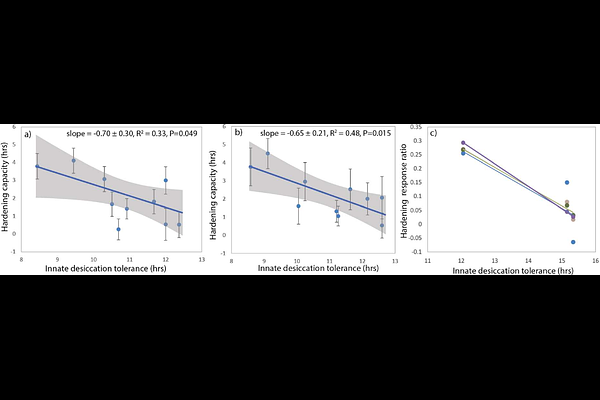Variation in phenotypic plasticity in desiccation tolerance is driven by trade-offs, not climate, in Drosophila melanogaster

Variation in phenotypic plasticity in desiccation tolerance is driven by trade-offs, not climate, in Drosophila melanogaster
Kellermann, V.; van Heerwaarden, B.
AbstractThe capacity for species to respond to environmental variation via phenotypic plasticity has been proposed as a mechanism for buffering species against climate change. Two main theories are proposed to explain the evolution of phenotypic plasticity - the climate variability hypothesis and the trade-off hypothesis - but the evidence for these hypotheses remains mixed. In the current study, we examine phenotypic plasticity (hardening capacity) in desiccation resistance across populations of Drosophila melanogaster collected along a climatic gradient from eastern Australia. While climate was an important driver of innate desiccation tolerance, we found no evidence of climate shaping hardened desiccation tolerance or hardening capacity. Instead, we found that populations with high tolerance tended to have lower plasticity, indicative of a trade-off. Further analyses, accounting for statistical non-independence, showed a strong negative correlation between innate desiccation tolerance and hardening capacity, supporting the trade-off hypothesis. These results suggest that for species with high tolerance, phenotypic plasticity is unlikely to contribute to their response to climate change.